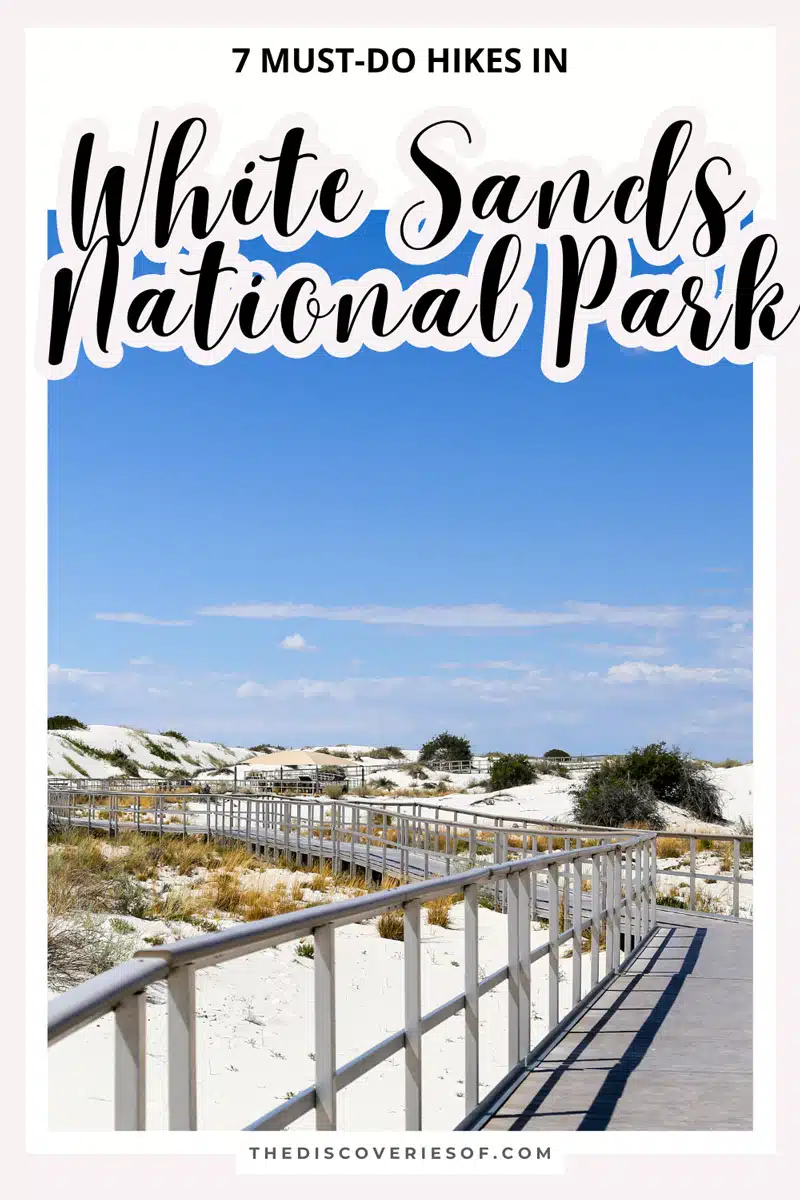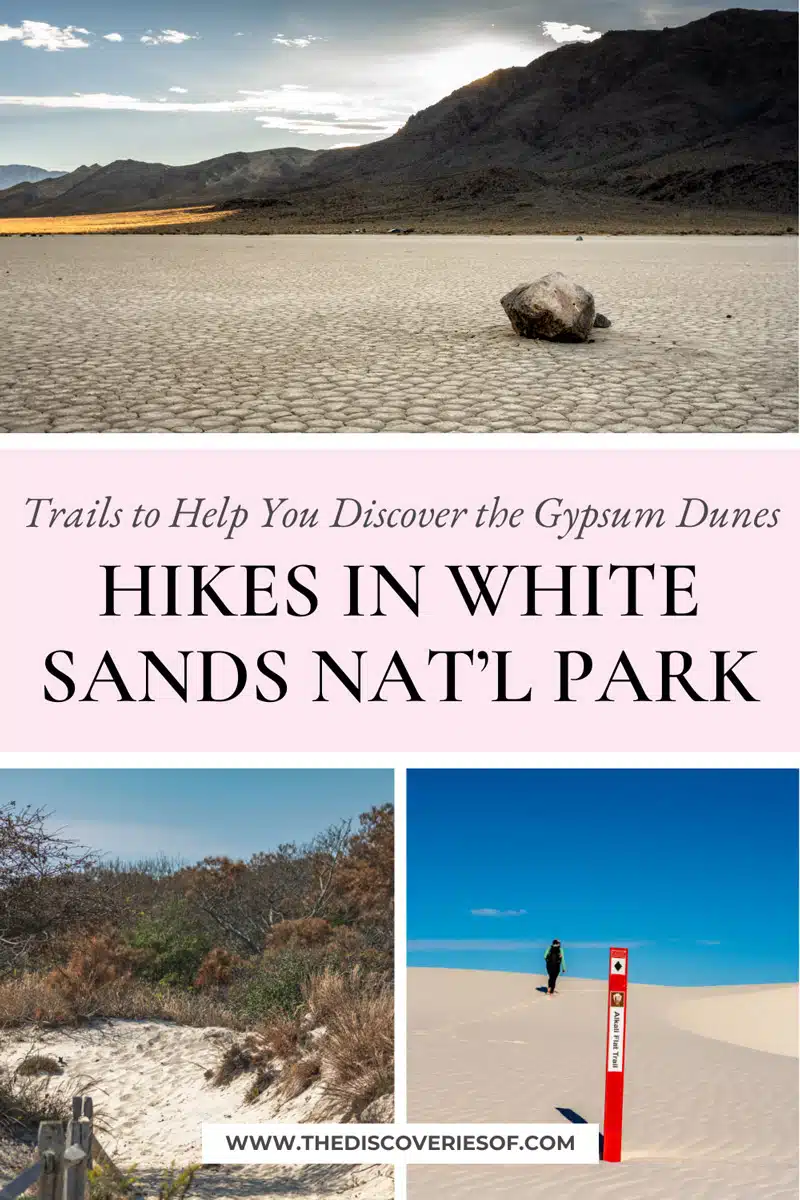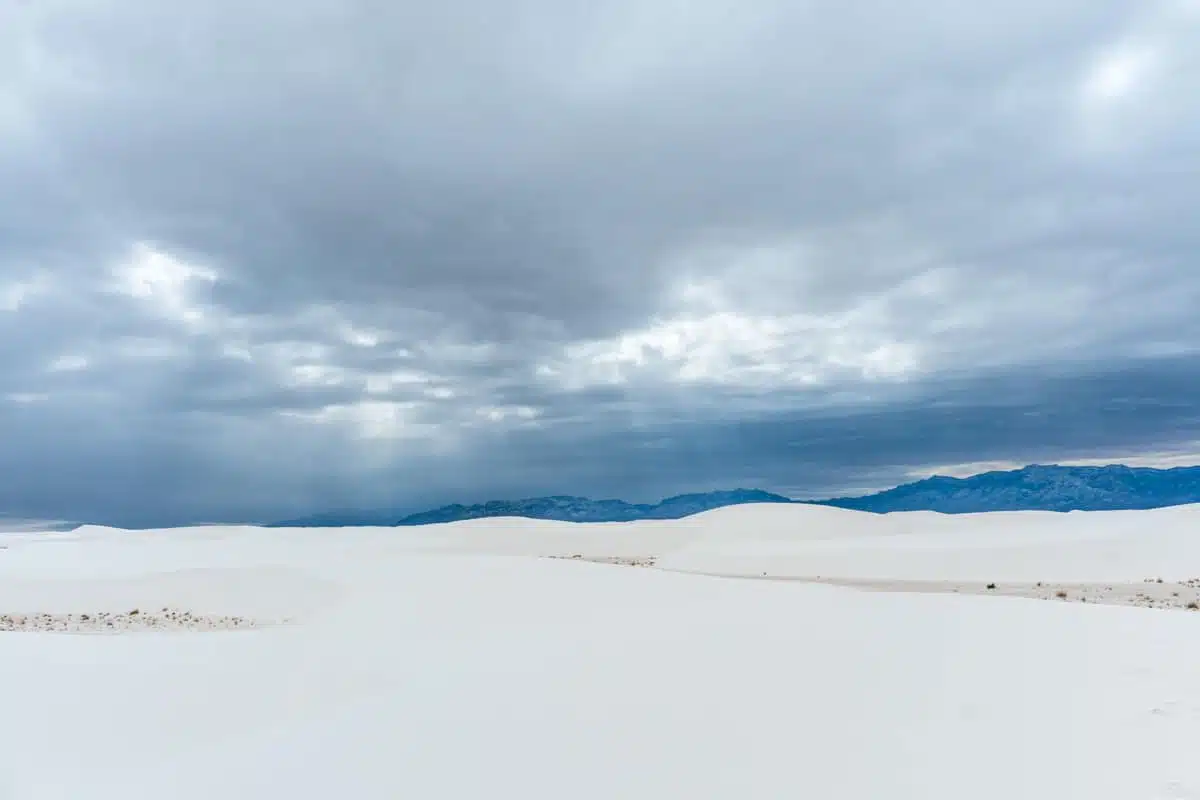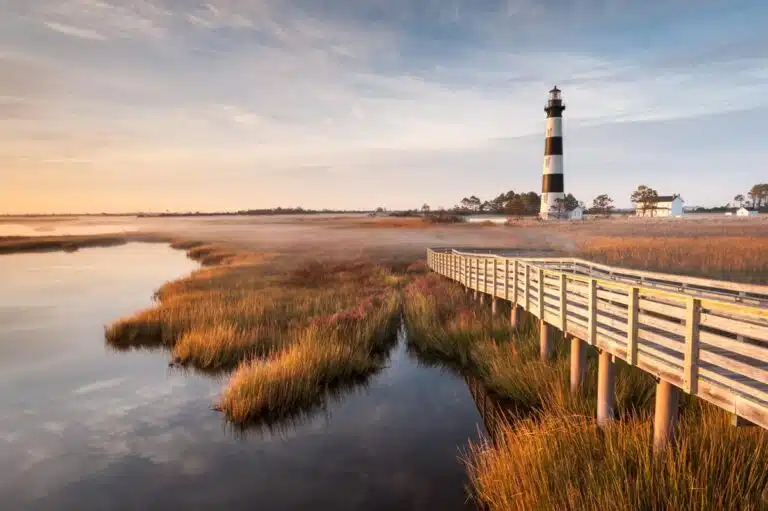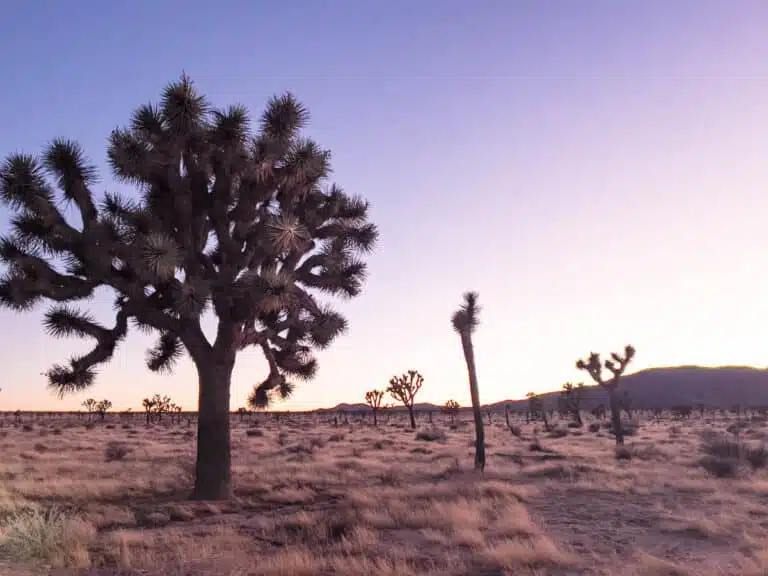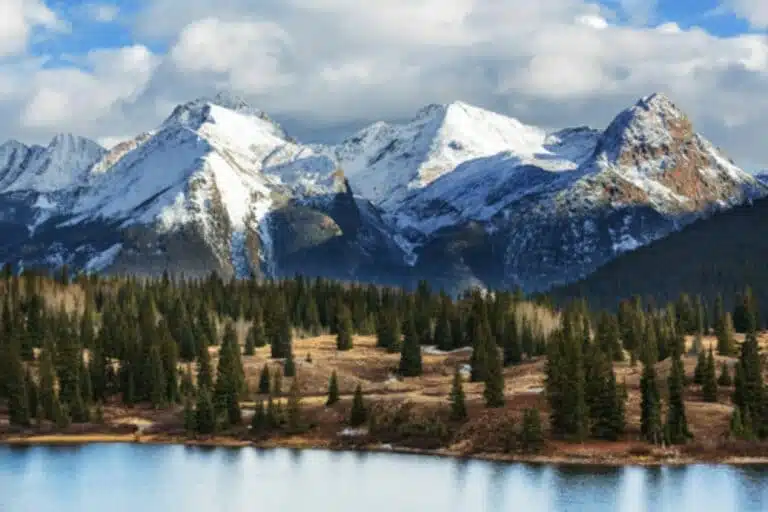Looking for an otherworldly experience in the South West? You’ve hit the jackpot – White Sands National Park hikes are some of the best in New Mexico.
White Sands National Park is one of the most unique national parks in the United States. I’m not kidding: It covers 145,762 acres of the Tularosa Basin and boasts around 20,000 years of human history.
But when people visit White Sands, they mostly come for the sand dunes – and I don’t blame them.
Being the world’s largest gypsum dune field (whereas most sand is made of silica), there’s plenty to see and do – from camping and stargazing to – of course -exploring some of the best hikes in the region.
However, unlike most national parks, you can explore White Sands in just a day. Which means that it makes for an incredible day trip.
Excited? You should be. Put on your hiking shoes and get ready to explore New Mexico’s unearthly landscape.
Best White Sands National Park Hikes
Interdune Boardwalk
Length: 0.4 miles (round trip)
Time: 10 – 20 minutes
Difficulty: Easy
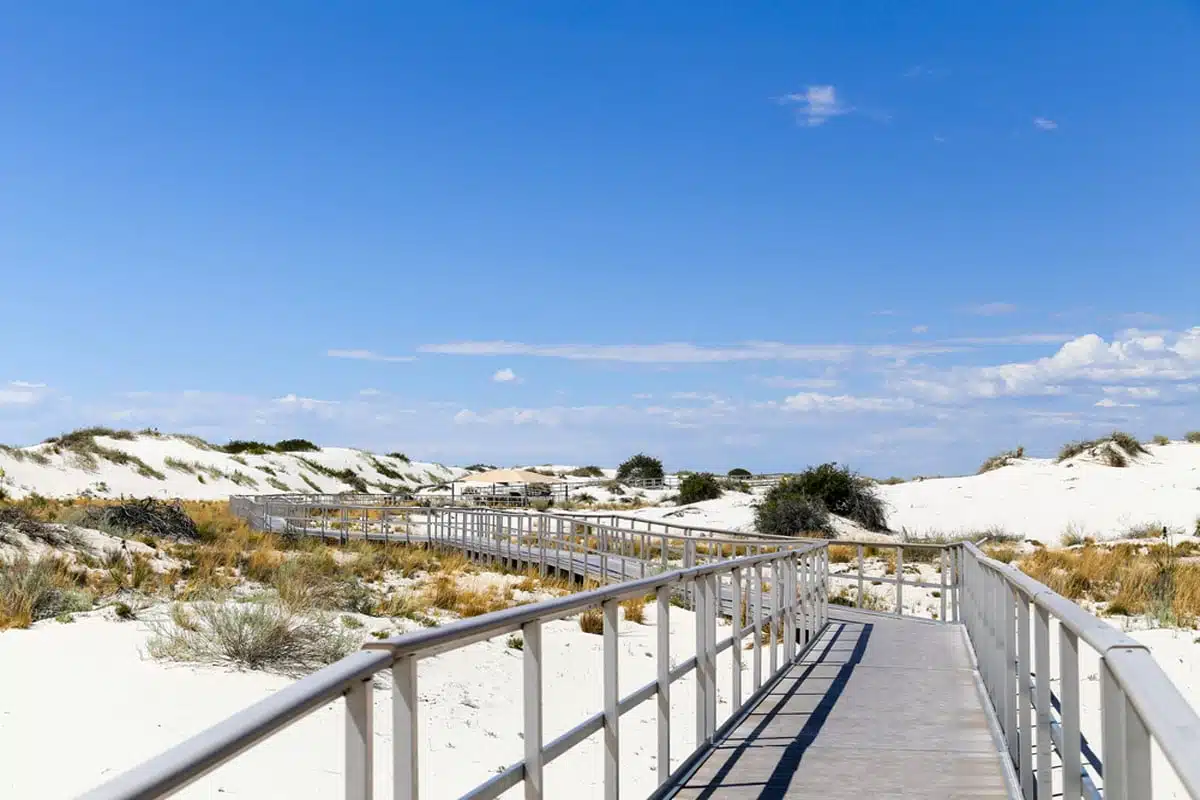
Short and sweet – that’s the Interdune Boardwalk trail in just two words. This is a hike for those who would like to see incredible views of the dune field and the Sacramento Mountains without doing too much walking.
It’s only 4.5 miles from the visitor centre and a great spot to start exploring the national park.
The Interdune Boardwalk Trail is also a great hike if you’d like to learn more about the geology, the formation of the dunes, and the flora and fauna that call White Sand National Park home. Along the trail, you’ll find several outdoor exhibits and signs that’ll give you more information.
The Interdune Boardwalk is the only trail in White Sands National Park that does not have colour-coded trail markers and a symbol along it. Not that you’ll need it – you simply need to follow the path.
Alkali Flat Trail
Length: 4.7-5 miles (loop)
Time: 2 – 3 hours
Difficulty: Hard
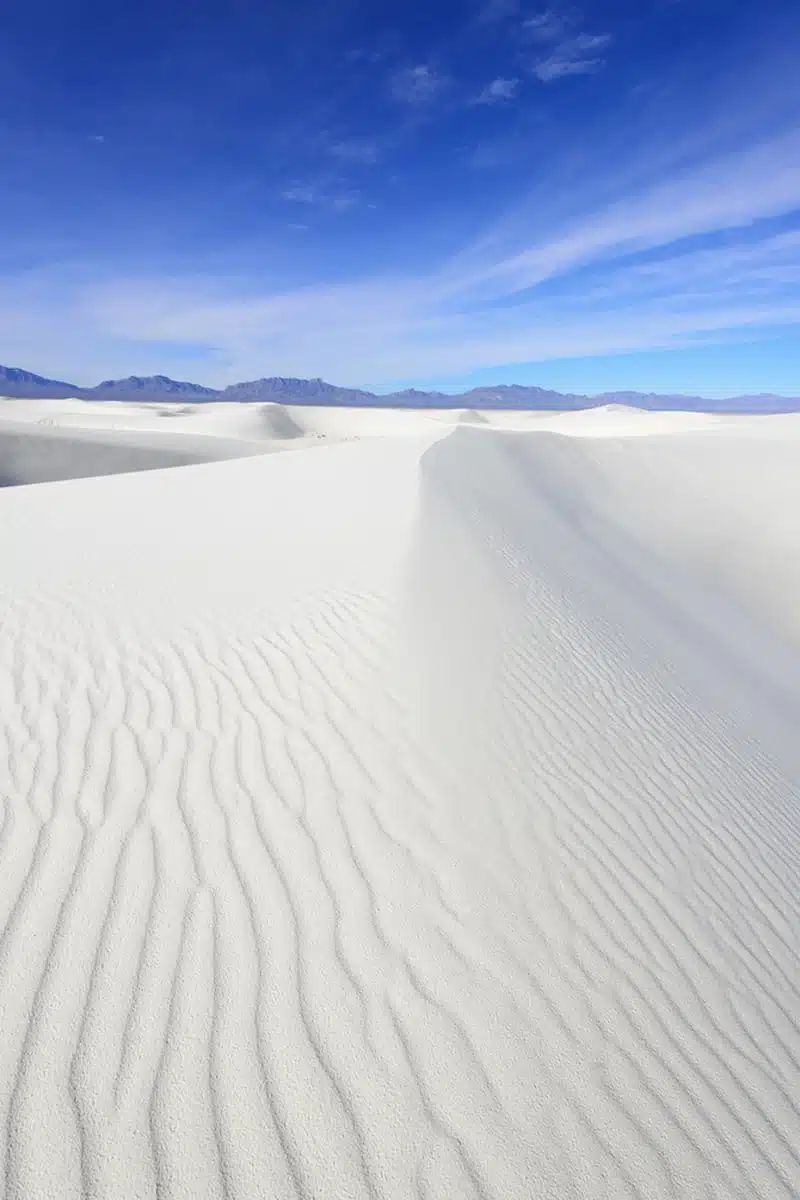
The Alkali Flat Trail is the longest and most challenging of all White Sands National Park hiking trails – don’t let that put you off, though. You’ll find the trailhead about seven miles from the visitor centre.
Make sure you follow the red markers with a diamond symbol to stay on track – it’s not too tricky, but it can be fairly easy to wander off. Which would be a huge mistake as the Alkali Flat Trails takes you through the heart of the dune field, which boasts spectacular views of endless dunes and a few pawprints.
Despite its name, this trail is anything but flat. The Alkali Flat Trail has several dunes and hills that you’ll have to climb, so don’t attempt this trek unless you’re ready for a challenge.
If I have to be honest, this wasn’t my favourite trail as it was pretty hard work. But the views were incredible, and you get into the midst of the sand dunes.
Top tip: Make sure you’re prepared for this hike, as the trail has no shade, no water refilling spots or toilets along the way. Bring a large water bottle and stop by the visitors centre before this hike. Do not attempt it in the middle of the day during the summer months.
Playa Trail
Length: 0.5 miles (round trip)
Time: 15 – 30 minutes
Difficulty: Easy
The Playa Trail is another fantastic hike you should make time for during your trip to White Sands National Park.
This short trek is particularly great if you’re on a New Mexico road trip and don’t have a lot of time to explore the national park. It’s also a good warm-up hike for both experienced and novel hikers.
You’ll find the starting point of the trailhead about 2.5 miles from the visitor centre, while you’ll need to keep walking along the path with green trail markers and a heart symbol to stay on course.
There are five main signs along the path to give you more information about this chameleon landscape. Speaking of which: what’s most exciting about the Playa Trail is that its scenery changes in colour according to the season.
The playa is a low-lying area that fills with water and becomes a white lake dotted with flowers and wildlife during the rainy season. And it turns into a (much-less photogenic) brown lake bed in drier seasons.
Top tip: Bring a printable map when hiking the trails, the park has limited cell service, and you may find that some of the colour-coded trail markers are hard to spot or the wind has blown them away.
Dune Life Nature Trail
Length: 1 mile (loop)
Time: 30 minutes – 1 hour
Difficulty: Medium
If you ask me, sandboarding is one of the best things to do in New Mexico, and the Dune Life Nature Trail is the perfect place to do it. That and hiking. Lucky then that this White Sands hiking trail boasts soft sands and two dunes you’ll have to climb.
The Dune Life Nature Trail is where two worlds meet. Sitting on the edge of the dune field, it boasts desert scrubs and gypsum sand dunes. Follow the blue trail markers with a club symbol, and you’ll find yourself at the most vegetated section of the dune field.
This is also where a lot of the park’s wildlife lives, but you may not see them. Why? Most desert animals are shy (and nocturnal), so look out for their tracks to get an idea of what may have happened the previous night.
Backcountry Camping Trail
Length: 2 miles (loop)
Time: 1-1.5 hours
Difficulty: Medium to Hard
Short on time? The Backcountry Camping Trail is a great alternative to the Alkali Flat Trail for those on a flying visit. It treats you to expansive views of snow-white gypsum dunes without having to do much walking.
The trail has orange markers with a spade symbol along it and boasts some vegetation and several steep dunes. It’s mostly used by backpackers who want solitude while trekking through the snow-white dune fields.
Like most of its best hikes, White Sands National Park’s Backcountry Camping Trail has no shade, but it’s definitely worth heading out on. Just make sure to bring sunscreen, a cap and plenty of water, and you’re all set.
Sunset Strolla
Length: 1 mile
Time: 45 minutes – 1 hour
Difficulty: Easy
If you’re looking for a quick and easy way to see the best of White Sands National Park, look no further than the Sunset Stroll. This short, ranger-guided hike constitutes a leisurely jaunt through the gypsum sand dunes, with not much climbing involved.
The slow-paced walk starts at the Sunset Stroll Meeting Area, five miles from the visitor centre. It’s timed to end at sunset, so you’re sure to get panoramic views of the sun setting over the mountains and the beautiful light effects of sunset on the white dunes.
You’ll also get a chance to learn about the uniqueness of the park’s geology, plants and animals from an experienced ranger.
Top tip: The Sunset Stroll veers off-road and goes over and across sand dunes, so it’s not wheelchair accessible. You’ll have to scramble over a few sand dunes, but visitors with special needs can ask for as much assistance as needed.
Best White Sands National Park Trails: Practical Tips
What to Bring
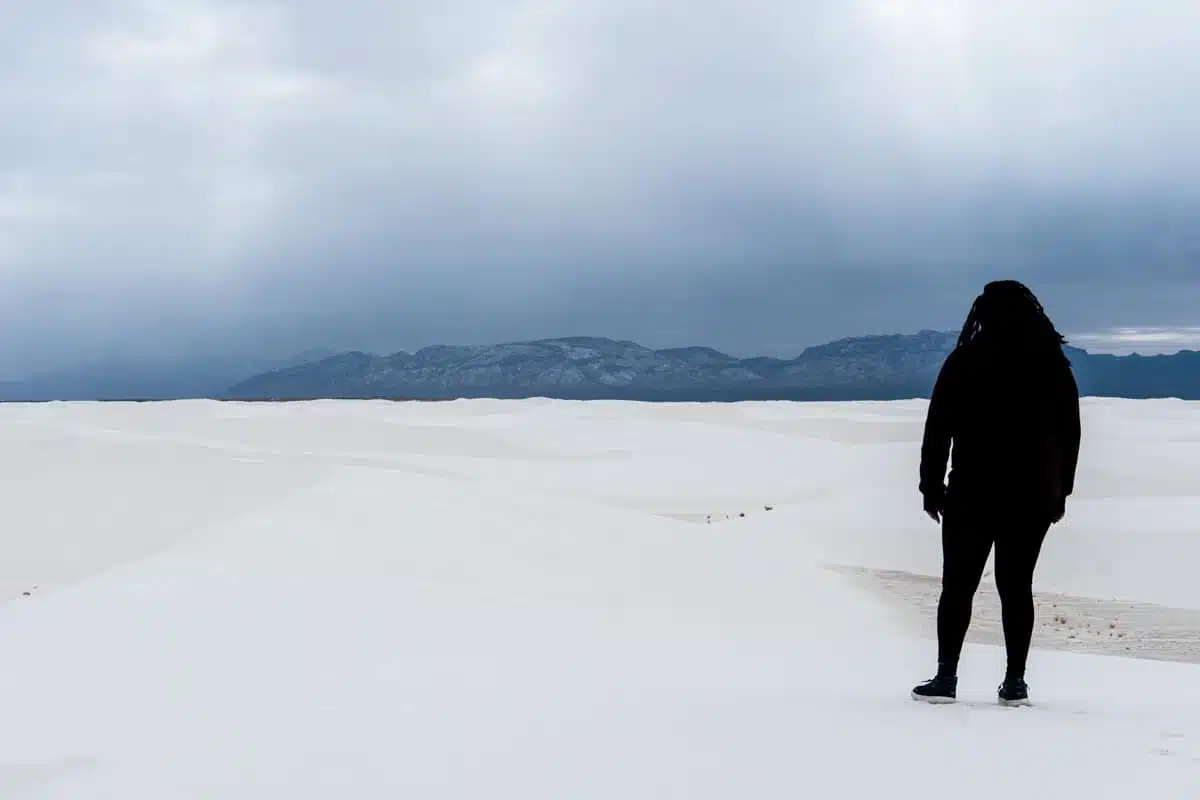
Most of the hiking trails in White Sands National Park do not have shade. So make sure you are well prepared to protect yourself from the blazing sun. Bring a high SPF sunscreen, a cap or a hat to keep you cool.
Bring lots of water and snacks, as there are no water-filling stations in the dune fields. You can refill your water bottles only at the visitor centre. You’ll need about a gallon of water per person per day when hiking in White Sands National Park.
Most of the trails in the park are made up of soft sand, so always wear comfortable closed shoes (or hiking boots) when trekking through White Sands National Park.
What to Know
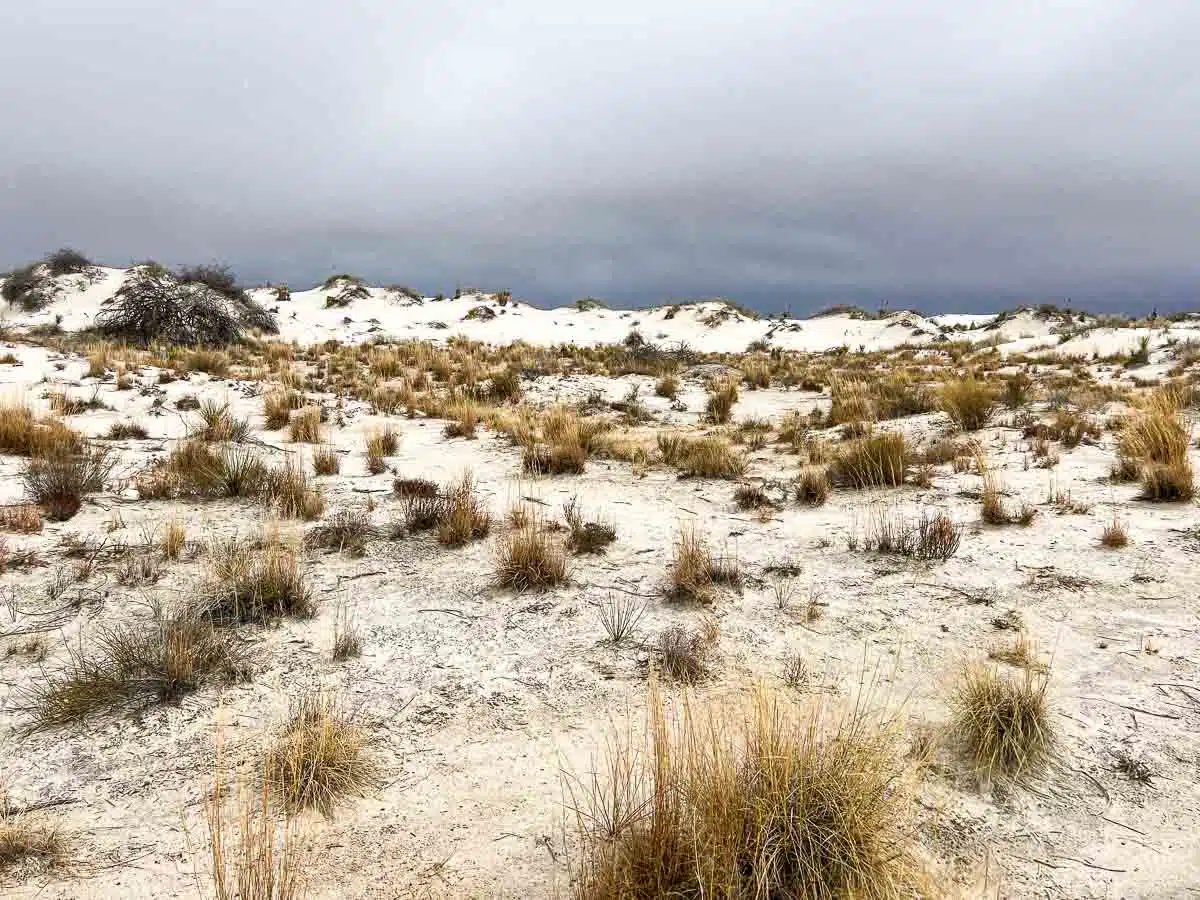
The “America the Great National Parks Pass” works at White Sands National Park, so it’s worth buying if you’re going to visit more than a couple of national parks throughout the course of a year.
The summer season brings the most tourists (and the heat can be deadly). So winter is one of the best times to visit White Sands National Park; it’s quieter and not as hot. But keep in mind that many of the trails are subject to closure during the rainy season.
An active military missile range surrounds White Sands National Park, so make sure you don’t touch any debris from the missile testing as it could still be active and can detonate. That said, there’s no need to be scared – just cautious.
White Sands National Park Hikes: Map
Love This? Save and Share on Pinterest
